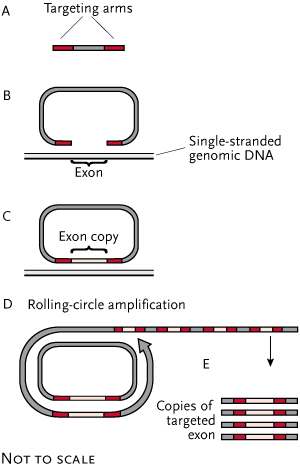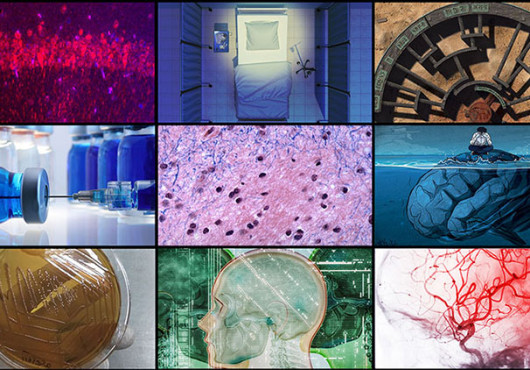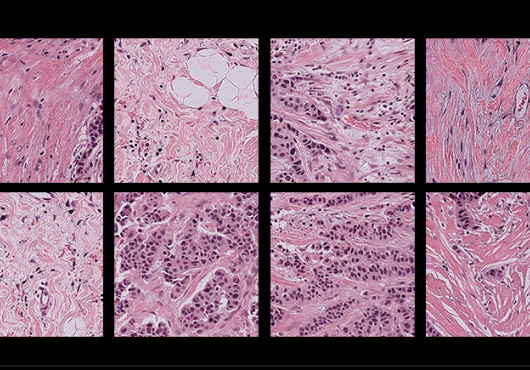Run PCR on a dozen unique DNA fragments in a single test tube and the tube fills with junk. Developed in 1983, this sequence amplification method works exceptionally well with primers targeting a single piece of DNA, generating millions of accurate copies in just a few hours. But it doesn’t scale. Drop too many different primers into the same tube and nonspecific reactions dominate.
And that’s a problem if you are trying to feed a machine that can sequence millions of fragments of DNA at the same time. In 2005, professor of genetics George Church and colleagues at HMS developed a next-generation sequencer with this type of appetite. While conventional Sanger sequencers process each piece of DNA separately, the new equipment reads millions of pieces in an array simultaneously, and PCR amplification can’t keep up with the demand for DNA. Church’s team has now published a solution.
“We’ve developed a new method involving circles that allows us to amplify thousands of unique DNA fragments in a single tube,” said Church lab researcher Gregory Porreca, a first author on their Nature Methods paper, published online Oct. 14.
“This brings us very close to our goal of affordable sequencing,” added corresponding author and former MD–PhD student Jay Shendure, who recently became an assistant professor at the University of Washington.
The $1,000 GenomeChurch wants to make sequencing more affordable to facilitate personal genomics. In the future, the DNA sequence of an individual could be used to predict his or her risk for particular diseases and response to specific drugs, informing treatment. Although the price of sequencing has dropped significantly since the Human Genome Project was completed in 2003, it has not fallen enough for this kind of individualized medicine.
According to the National Institutes of Health, the Human Genome Project cost about $2.7 billion. Companies now estimate they could sequence a human genome for $100,000 or $200,000 using the advanced equipment developed by Church and others. Even if scientists make these platforms more efficient, the price tag would exceed $1,000.
So Church lab researchers have looked for other ways to lower the cost. Since the majority of mutations shown to affect human traits occur within exons, focusing on these protein-coding regions seemed to be a cost-effective alternative to sequencing full genomes. Exons make up roughly one percent of human DNA, so this approach could potentially lower costs 100-fold, bringing $1,000 genomics within reach. Other groups have taken similar shortcuts. The HapMap consortium has focused on common point mutations near causative alleles. But the new approach would also capture mutations that are individually rare, but collectively common.
“We’re essentially prioritizing to get another couple orders of magnitude, but these are the sections of the genome that are most relevant to key challenges, such as cancer genomics, as well as the most likely to yield interpretable results,” said Shendure. In 2006, for example, Bert Vogelstein and his colleagues at Johns Hopkins compared the sequences of 13,023 protein-coding genes in 11 breast and 11 colorectal tumors and identified 189 of them mutated at significant frequency. This type of comparison has already yielded key insights into disease.
“We’re going to go after coding exons and anything else that’s highly likely or proven to include mutations that affect traits,” explained Church.
The Recipe for Cutting CostsThe challenge was to develop a multiplex amplification technology that did not have the same limitations as PCR. Their solution was based on a circle of DNA. The researchers compiled the sequences immediately upstream and downstream of 55,000 human exons and used them to program a microarray. Each spot on the chip produced a single-stranded oligonucleotide composed of targeting arms for a particular exon, which were joined by a common linker sequence (see diagram). The result? A tube teeming with 55,000 unique DNA fragments corresponding to specific exons.
After initial amplification of these linear oligos, the team added single-stranded genomic DNA to the mix. The targeting-arm pairs bound to their complementary sequences on the genomic DNA, leaving the linker between them arcing beside the exon. DNA polymerase filled the gap between each pair of targeting arms, completing the circles while copying the exons.
The tube then contained tens of thousands of DNA circles containing copies of different exons and a common linker. This linker served as a target for a single pair of primer sequences. The researchers thereby eliminated the use of unique primers, paving the way for multiplex amplification. They added DNA polymerase, which traveled around each circle hundreds of times as copies of the sequence peeled off like the skin of an apple. The scientists amplified the resulting strand, coaxed the copies back into circles, and conducted another round of amplification to generate enough copies for a shotgun sequencing library.
The team successfully amplified 10,000 human exons in a single tube, generating ample material for a high-throughput sequencer. The method is not perfect, however, since they fell short of their 55,000-gene target.

“We checked to make sure that the oligos were forming properly and they were, so it looks like the problem is downstream with the circle reactions,” said Porreca. “We’re hoping to work out these kinks in the next few months.”
“Together with the new sequencing platform, this one-percent approach will bring about the affordable genome that I’ve been obsessing about for so many years,” said Church. He plans to expand the approach to include other regions of the genome if labs show they influence traits. In the future, his team might synthesize oligos corresponding to microRNAs, for example.
“This is like the Apple II,” said Church. “When it came out, the machine didn’t do all the things that other computers did at the time, but you could afford it, and it was pretty good, and more people could use it and start improving it.”


